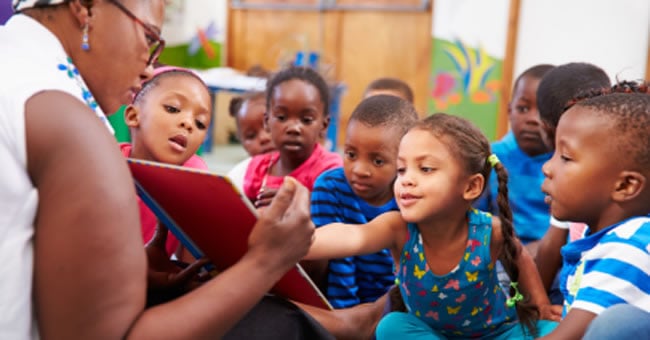
Circle time is an important part of the daily routines in an early childhood classroom, and it's one of the best places to work on social and emotional learning. "Perhaps more than any other part of your day, your circle is the place for building community and collectively expressing thoughts and feelings. It takes a number of social skills to be able to just sit, listen, and take turns in a group, making circle time the perfect place to get started for the day," states Ellen Booth Church in Getting to the Heart of Learning. She also provides the following tips on what you need to consider as you work on using circle time to support social and emotional learning:
Focus on Emotions
Since children can often talk about a book character's feelings better than their own, make an effort to read books that depict characters who are experiencing a certain emotion, such as anger, jealousy, or sadness, during circle time. Ask children how the character is feeling, how they know that is what he/she is feeling, and if they have ever felt the same way. This encourages children to increase their vocabulary of emotions, which will allow them to learn how to better express/describe their own emotions. Church suggests that you should focus on one emotion word a week and use literature, songs, and examples to keep the conversation about the emotion going.
Focus on Social Skills
By choosing a social-emotional skill word to highlight in your classroom each week, you can use group time to reinforce the vocabulary and concept. Church's example in the book is the word "listen". Children will feel more welcome in a group if they feel like they are being listened to. Learning to listen is also an important part of social and emotional development and will help you have a good circle time. Asking children to remember and share what they have heard someone say is a great way to practice reflective listening. You can promote and model reflective listening during circle time by repeating what a child says and asking if you are correct.
Use Gerunds to Introduce Social-Emotional Concepts
Gerunds are verbal nouns that end in –ing (e.g., walking, talking, running, etc.). Using gerunds to give simple directions can help children remember what they are supposed to be doing. Church gives the example of saying "looking" or "listening" when children are not looking at you or listening. "The one simple word is easy for children to hear and respond to, is empowering, and builds vocabulary. Plus, a gerund is a positive reminder instead of a big no or do not," states Church.
Be sure to browse our Social and Emotional section for a variety of materials you can utilize in your classroom to support social and emotional learning and development.
